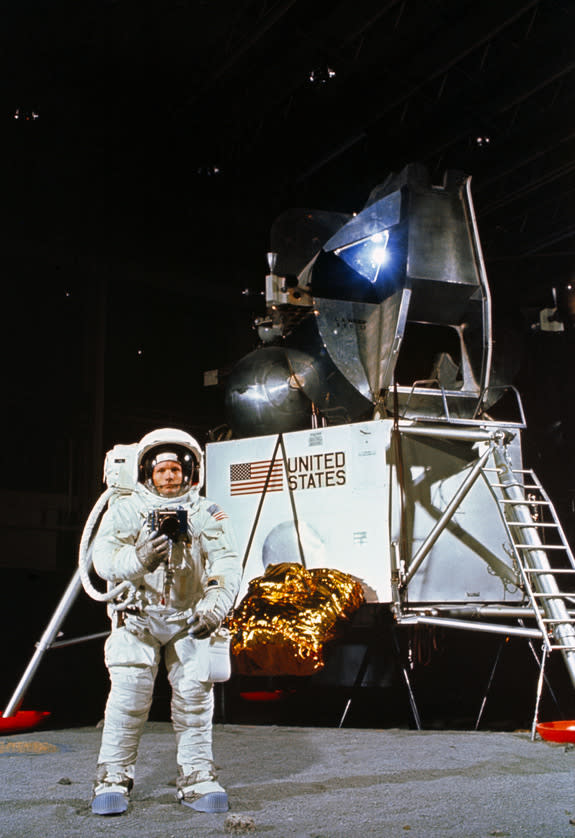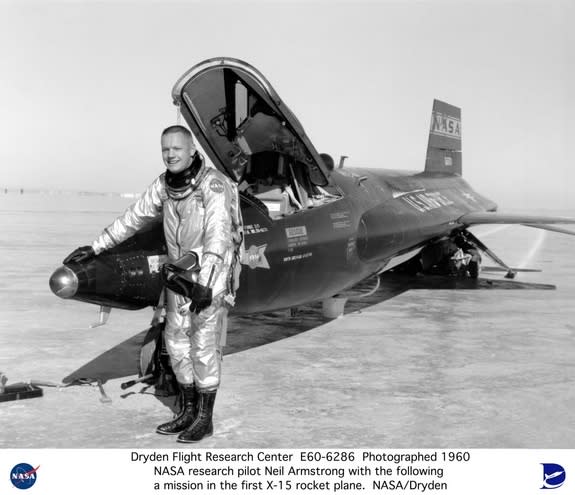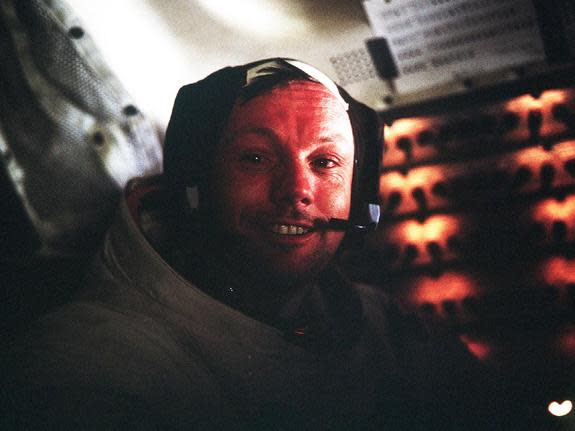NASA Remembers Neil Armstrong with 'Tranquility Base' Music Video
Famed Apollo 11 moonwalker Neil Armstrong died one year ago today and NASA is remembering the iconic astronaut with a touching music video tribute.
Neil Armstrong died on Aug. 25, 2012 at age 82. A talented Navy aviator, test pilot and astronaut, Armstrong cemented his place in history on July 20, 1969 when he became the first person to walk on the moon as commander of NASA's Apollo 11 lunar landing mission.
To remember Armstrong's legacy, NASA posted a video tribute with the song "Tranquility Base" by songwriter Eric Brace. The video, which NASA posted on YouTube and its website Friday (Aug. 23), melds iconic photos from the Apollo 11 moon landing (Armstrong dubbed the site "Tranquility Base" after touchdown) to Brace's lyrics. [The Truth About Neil Armstrong (Op-Ed)]
"NASA is remembering Apollo 11 commander Neil Armstrong, the first human to set foot on another world, on the first anniversary of his death," NASA officials wrote in a video description. "Red Beet Records recording artist and Grammy nominee Eric Brace, with some video assistance from NASA, honors Armstrong with an original composition, 'Tranquility Base,' originally written to commemorate the 40th Anniversary of Apollo 11 in 2009."
Brace's song begins:
"Tell me Neil, what you were thinking
With all of us watching you on the TV
Taking small steps and giant leaps and planting the flag
In a place no one had been."
Throughout "Tranquility Base," Brace ponders on what Armstrong thought at each step of his historic Apollo 11 lunar landing mission with crewmates Buzz Aldrin, who also walked on the moon, and Michael Collins, who remained in lunar orbit aboard the command module.
Armstrong was born on Aug. 5, 1930 in Wapakoneta, Ohio, and served as a Navy aviator from 1949 to 1952. In 1955, he joined the National Advisory Committee for Aeronautics, or NACA, which eventually evolved into NASA.
Armstrong's first assignment was in his home state of Ohio, where he served at the NACA Lewis Research Center, which eventually became NASA's Glenn Research Center, in Cleveland. He served as a research pilot, engineer and astronaut for NASA, flying over 200 models of aircraft, rockets, helicopters and gliders, as well as the X-15 rocket plane.
Armstrong reported to astronaut duty in 1962 and performed the first successful docking of two vehicles in space during the Gemini 8 mission in 1966 before commanding the Apollo 11 moon landing flight in 1969.
Following the Apollo 11 flight, Armstrong served as NASA's Deputy Associate Administrator for Aeronautics before retiring from the space agency. Between 1971 and 1979, he taught as a college professor at the University of Cincinnati. Armstrong served as chairman of the company Computing Technologies for Aviation, Inc., in Charlottesville, Va., from 1982 to 1992. He was also served on the board of trustees for SPACE.com.
Armstrong remained active in the spaceflight community until his death. He was a staunch supporter of new commercial suborbital spaceflight efforts, but was critical of NASA's plan to rely on new private spaceships to fly astronauts into space.
Armstrong is survived by his wife Carol, two grown sons, a stepson and stepdaughter, 10 grandchildren and his brother and sister.
Email Tariq Malik at tmalik@space.com or follow him @tariqjmalik and Google+. Follow us @Spacedotcom, Facebook and Google+. Original article on SPACE.com.
Copyright 2013 SPACE.com, a TechMediaNetwork company. All rights reserved. This material may not be published, broadcast, rewritten or redistributed.




